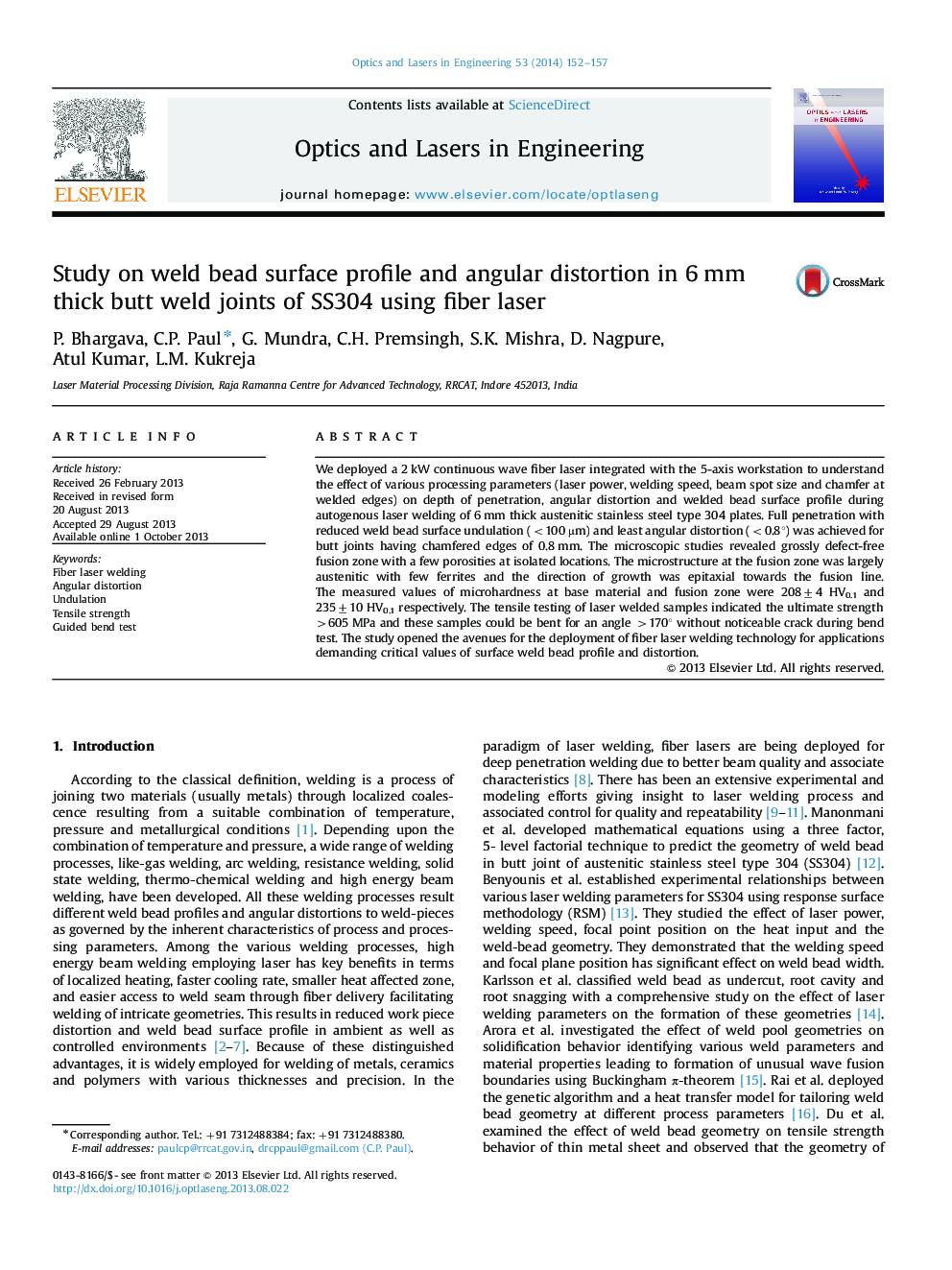| Article ID | Journal | Published Year | Pages | File Type |
|---|---|---|---|---|
| 743775 | Optics and Lasers in Engineering | 2014 | 6 Pages |
•Laser welding of 6 mm thick SS304 for flat welded bead and least angular distortion.•Weld specimens having various chamfered depth forming an included angle of 60°.•The joint strength and ductile behavior of laser welds close to that of base material.•The weld joint efficiency was found to be between 83 and 85% in welded samples.•Micro-hardness had variation of 10% in base material and fusion zone.
We deployed a 2 kW continuous wave fiber laser integrated with the 5-axis workstation to understand the effect of various processing parameters (laser power, welding speed, beam spot size and chamfer at welded edges) on depth of penetration, angular distortion and welded bead surface profile during autogenous laser welding of 6 mm thick austenitic stainless steel type 304 plates. Full penetration with reduced weld bead surface undulation (<100 µm) and least angular distortion (<0.8°) was achieved for butt joints having chamfered edges of 0.8 mm. The microscopic studies revealed grossly defect-free fusion zone with a few porosities at isolated locations. The microstructure at the fusion zone was largely austenitic with few ferrites and the direction of growth was epitaxial towards the fusion line. The measured values of microhardness at base material and fusion zone were 208±4 HV0.1 and 235±10 HV0.1 respectively. The tensile testing of laser welded samples indicated the ultimate strength >605 MPa and these samples could be bent for an angle >170° without noticeable crack during bend test. The study opened the avenues for the deployment of fiber laser welding technology for applications demanding critical values of surface weld bead profile and distortion.
